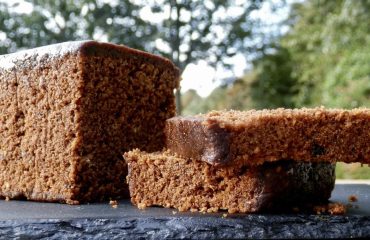by Jonathan Rudd
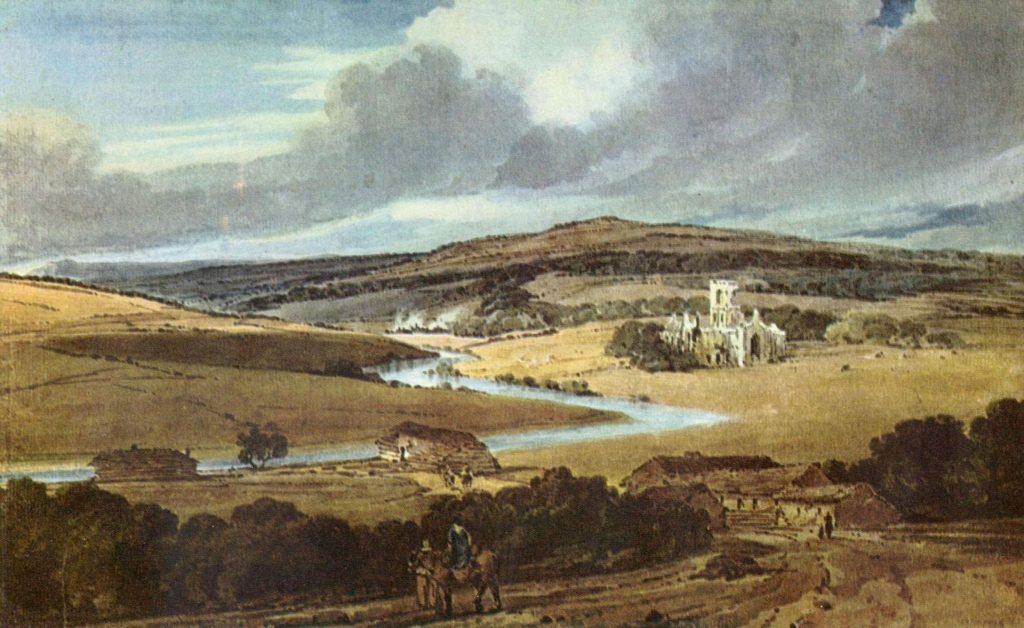
Background of the Painting
Thomas Girtin was an artist from London, who during his tragically short life produced an amazing body of work. As a teenager he became friends with JMW Turner and they inspired each other to master the art of water colour. Girtin had already painted several other structures, including Guisborough Priory, Lindisfarne Castle and Durham Cathedral. He arrived in Leeds in 1800 to paint one of his favourite subjects, Kirkstall Abbey and its surrounding area.
At the time of the painting, Leeds only had a population of around 30,000 and provides a unique glimpse into what this part of the city looked like before the influx of mills, houses and people which would soon follow during the 19th Century. Within just 50 years the landscape seen in the painting would have changed beyond recognition and then once again in the post war industrial decline of the city, with the abbey ruins and river the only constants during 220 years of rapid change.
Existing Features shown on the Painting
Girtin’s painting shows the course of the River Aire flowing into Leeds from the surrounding countryside. By 1800 the abbey had stood there for 648 years after being founded for Cisterian Monks by the De Lacy family in 1152. In the painting, Kirkstall Abbey is a ruin and had been so for the past 260 years since November 1540 when it surrendered to Henry VIII’s forces during the Dissolution of the Monasteries. Next to the abbey ruins also marks the halfway point between London and Edinburgh.
In the distance what looks like steam can be seen next to the river. This is likely to be from Kirkstall Forge which was one of the oldest industrial areas in the UK. It started as a corn mill for the monks of Kirkstall abbey, but then diversified into iron production in the 16th Century and was the foundation of Leeds’ industrial prowess.
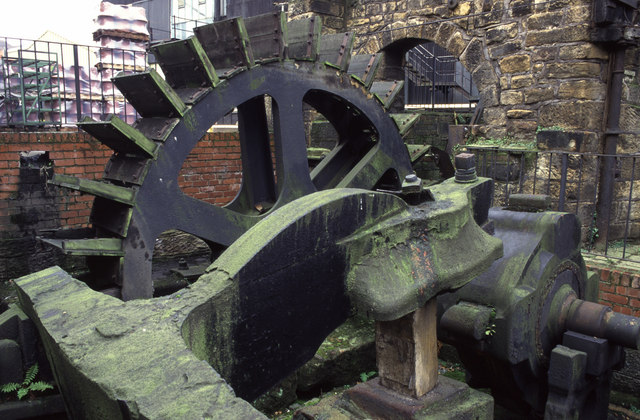
Worth mentioning also but not on the painting is the newly built Leeds-Liverpool Canal, which would have been just 23 years old and flowed from the City Centre, past Kirkstall and was just out of sight on the left hand side of the painting.
In the foreground of the picture two people are seen talking, one of which is on horseback near a small cluster of trees and amongst a scattering of farms. Little perhaps did these people realise the dramatic changes to the landscape around them which would happen in the next two hundred years.
Early Changes To The Landscape
After Girtin’s last brushstroke in 1800, the landscape began to change almost immediately.
Across the river Benjamin Gott’s Armley Mill was being redeveloped into one of the largest woollen mills in the world, just five years after the Girtin painting in 1805, which replaced an earlier corn mill that had burnt down in 1804.
This was joined by St Ann’s Mill’s Mill in 1836 and Abbey Mills which was rebuilt to full capacity by 1847, after the original one burnt down in 1797, just three years before Girtin’s painting.
In 1824 the first turnpike road was built linking Kirkstall to Leeds City Centre and would have run right through the middle of the painting and past the abbey ruins. This later became known as the A65, or Kirkstall Road. By the side of this new road, inns, such as The Cardigan Arms appeared to quench the thirst of weary travellers.
Just 29 years after the painting the first railway line was built at Kirkstall Forge and then eventually became part of the Leeds-Bradford line which opened in 1846. Rising up near the bottom of Girtin’s painting in 1849 was Kirkstall Viaduct which would carry the trains over the River Aire and Leeds Liverpool Canal on the Leeds to Harrogate line.
Just 50 years after Girtin’s painting, the area around Kirkstall Abbey and the River Aire would have been unrecognisable. By 1851 the population of Leeds had reached 101,000 people.
As the Industrial Revolution gathered pace in the latter half of the 19th Century more mills were built along the River Aire. The newly built mills would require a large workforce and somewhere for them to live.
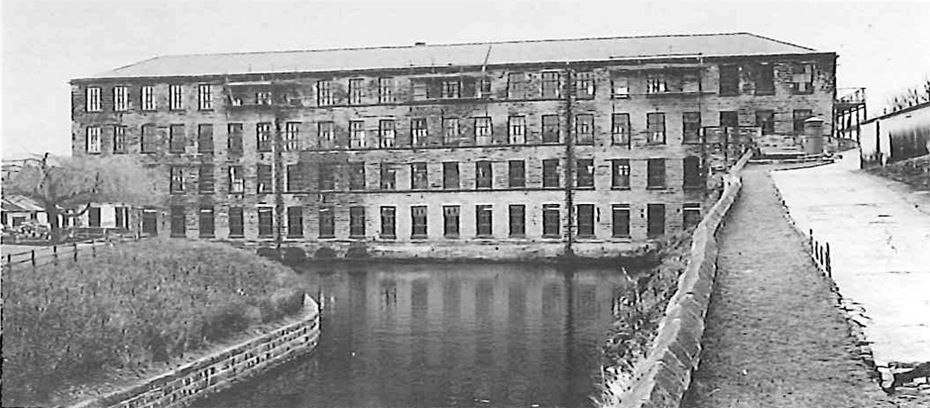
During this period the small, rural village of Burley dramatically expanded with the fields on the right of the painting being filled with row upon row of back-to back houses by the mill owners to house their workers. Around these streets came shops, pubs and churches, because the residents needed places to buy food, drink and worship. By now Leeds was becoming one of the principle wool and cloth making cities in the world. In 1895 Kirkstall Abbey was opened as a tourist attraction to the general public.
In the latter half of the 19th Century the infrastructure developed even more. An electrified tram system along Kirkstall Road was opened in 1891 and by 1930 a power station was built next to The River Aire, on the left of Girtin’s painting. In the same year the Hawksworth Estate was built, which on Girtin’s picture would have been near the trees just beyond the abbey ruins. These were part of a national government project to build houses ‘fit for heroes’ for those who had served in the First World War. By this time the first motor cars were starting to appear on Kirkstall Road and surrounding streets. In 1959 the tramway system ended as more cars filled the roads of the city.
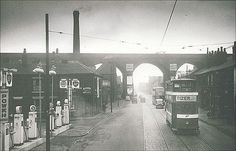
After World War II these streets, now nearly 100 years old were starting to show their age. Many still had outside toilets, poor sanitation and were condemned for destruction in the government’s slum clearance policy of the 1960s and early 70s. The destruction of these worker’s houses also co-incided with a steep decline in the woollen industry and British manufacturing. The giant Armley Mills ceased production in 1969, while other surrounding mills followed suit during this period. Kirkstall Power Station closed in 1976 and was demolished three years later.

In their place came new industry, leisure and tourism. Armley Mills re-opened as the Industrial Museum in 1982. Meanwhile the gaps left by the slum clearance were beginning to be filled, with Yorkshire Television taking up residence in 1968 and the opening of Cardigan Fields Retail & Leisure Park in the 1980s, complete with a multiplex cinema and restaurants.
The industrial decline in the area continued into the new millennium when after 800 years of existence, Kirkstall Forge closed. The entire 65 acre site was demolished in 2008, apart from a waterwheel and slitting mill, dating back to 1676. In 2015 a new retail park was opened on the site, followed a year later by a new railway station. Only a few months later on Boxing Day 2015 most of Thomas Girtin’s painting was submerged in water as the infamous floods which affected many parts of Yorkshire left numerous homes and businesses devastated, including Armley Mills itself.
Currently, 220 years after the painting of Kirkstall Abbey, there are grand plans in place to large area where Kirkstall Forge once stood into the future. A self-contained village with apartments, offices and retail is set to be built throughout the 2020s, with plans still ongoing.
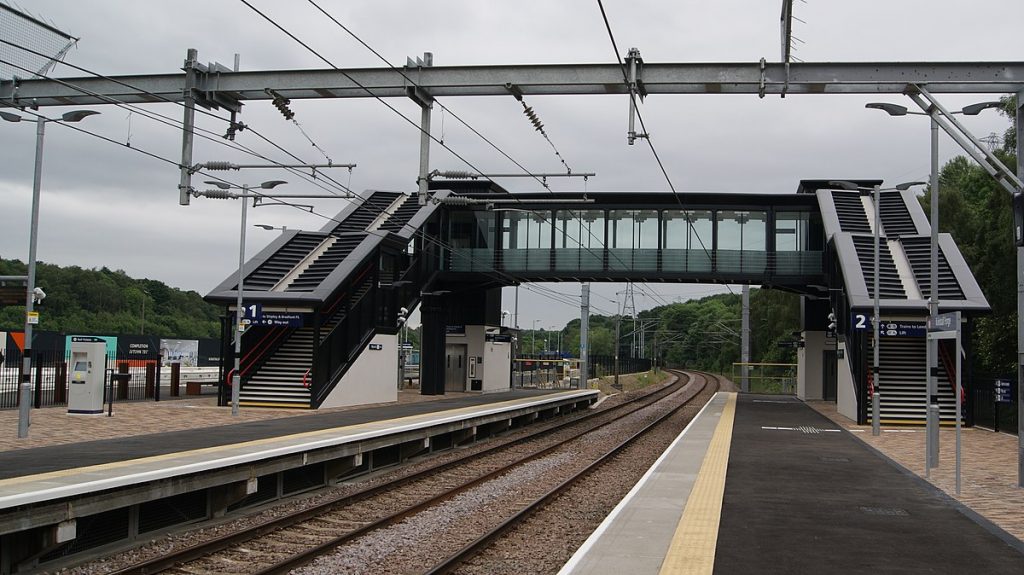
The ruins of KIrkstall Abbey and the River Aire painted by Thomas Girtin have witnessed a lot of social, industrial and landscape changes in a relatively short space of time, but have remained a constant features of the landscape in this part of Leeds.
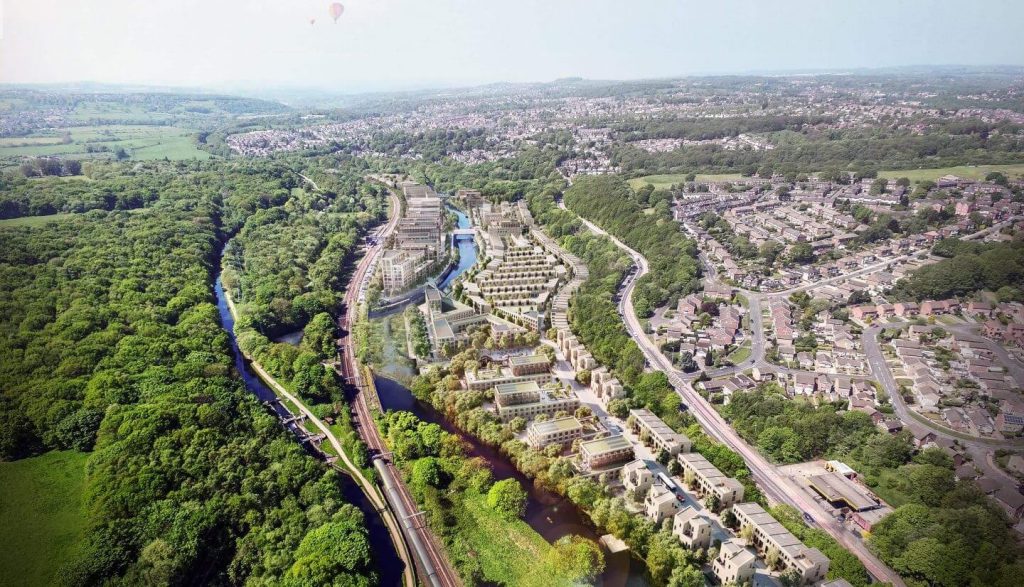
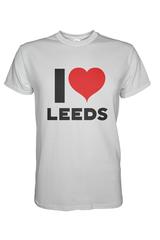

![listening to music Listening to my playlist [Source: pexels.com]](https://i-yorkshire.com/wp-content/uploads/2020/01/listening-to-music-370x240_c.jpeg)
